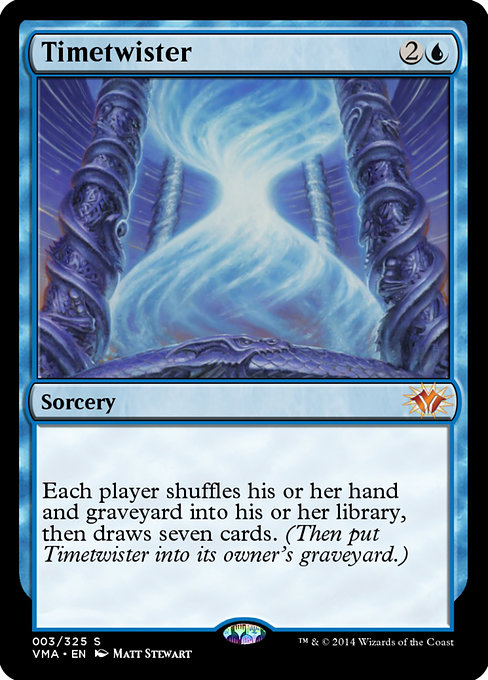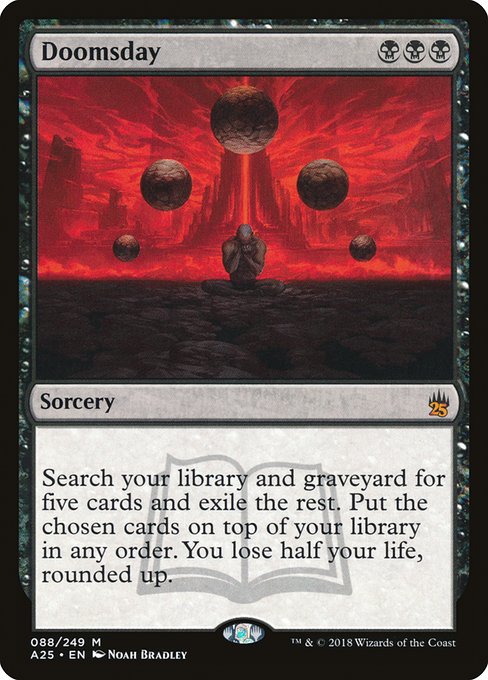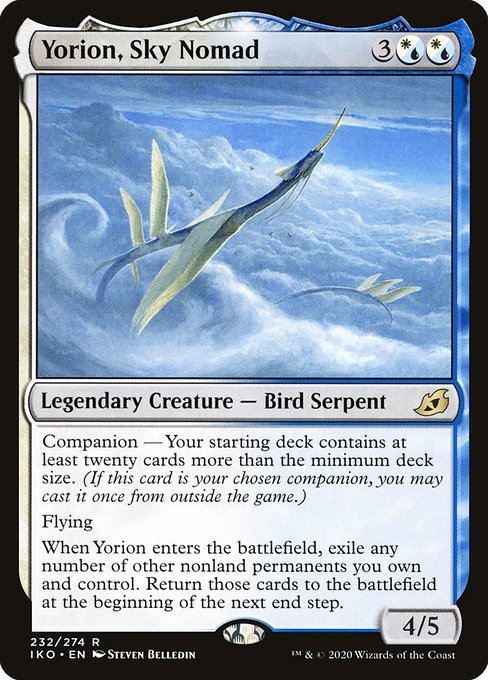“Consistency is the last refuge of the unimaginative.”—Oscar Wilde
Magic is a game that has to balance consistency with randomness. Stray too far to either side, and you’ve reduced the game to the flip of a coin. This balancing act has been complicated by one of the game’s pillars: decks that function by combo’ing off without recourse for the opponent. One of the earliest combo decks in Magic was Channel, paying nineteen life, into Fireball for the full twenty.
Early Magic didn’t have the four-of rule or the sixty-card minimum deck size rule, so it was possible to run fifteen Black Lotuses, fifteen Channels, and fifteen Fireballs and win on turn one with a bit of luck. Those rules were so obviously broken that Wizards of the Coast imposed the four-of and 60-card constructed deck rules in January 1994, less than six months after the Alpha Edition went on sale.

Vintage historian Stephen Menendian twists these early combos to their breaking point with another three-card combo: Timetwister, Lotus, and Fireball. That’s consistency at its most degenerate, like a game of chess played with fifteen queens and a king or golfing into the Grand Canyon. You might still win, but if the outcome is guaranteed, why bother playing?
It’s also worth noting that original Magic was intended to have inconsistency built into it through mechanisms other than deckbuilding. The designers worked from the assumption that players would only buy a few decks, limiting their access to cards, and through the ante system ensuring that cards would cycle between players, decreasing the likelihood that decks could be built around combos. The combo you once deployed against your opponent could easily pivot back to you, once you’d played enough matches. As the Beta Rulebook notes, somewhat sinisterly, “A person who obtains their cards by guile is usually more formidable than a person who simply buys them.”
With the introduction of the four-of rule in 1994, combos became less consistent through natural draws. Still, the early years of Magic were characterized by fast tutors to improve consistency: 1993-1997 brought Demonic Tutor, Merchant Scroll, the Mirage block tutor cycle, Buried Alive, supertutor Doomsday, and Natural Order. These cards cemented the combo decks of the era, from Prosperous Bloom to Trix to Academy Rector combo, and saw play in toolbox decks and aggro decks like Wakefield Green and Rec/Sur.

This golden age of combo ran from 1997 through 2003, when the “Rock/Paper/Scissors” metagame of Combo/Control/Aggro was the game’s backbone. 2002 brought another innovation in the Wish cycle, which allowed combo decks to run combo pieces in the sideboard and find them more consistently with the Wishes. The sideboard, as we’ve learned with Companion, is a vault safe from disruption and interaction.
Consistency still plagued the game after 2003, but it was more in the sense of dominant archetypes. Affinity was so cursedly consistent because the cards were both interlocked and interchangeable, Caw-Blade combined tutors in Squadron Hawk with unprecedented card selection in Jace, the Mind Sculptor and Preordain, etc. The most powerful tools for deck consistency in the Modern card frame have been banned over the years, from Ponder, Preordain, and Sensei’s Divining Top, to Dig Through Time, Gitaxian Probe, and Birthing Pod.

Magic’s two greatest design mistakes of the last year—Once Upon a Time and the Companion mechanic—are so destructive because of their consistency. Once Upon a Time smooths your draws, leads to the same line of play game after game, and was omnipresent in several formats. If you weren’t playing it, much like if you currently aren’t playing with a Companion, you’ve probably built your deck wrong.
In their announcement of its Modern banning (following previous bannings), Wizards specifically called out the “consistency” it afforded decks, adding “[i]n order to facilitate more varied gameplay and mitigate future risk, Once Upon a Time is banned in Modern.” Once Upon a Time was a zero-cost Ancient Stirrings, which offered no nuance. If it was in your opener, you cast it on turn one for free and got an immediate advantage over your opponent. That’s how consistent flattens the game and limits play skill in favor of uniformity.
Contrast that to when consistency succeeds. The last year has also brought with a positive change: the London mulligan. While it makes draws slightly more consistent for decks that require certain cards in their opening hands, there’s still an element of player choice. It rewards skill and prioritizes solid decision-making—e.g., do I lose my third land or situational removal to go down to six? The Vancouver mulligan, with its single scry, was a step in the right direction; but the London mulligan allows for more flexibility in what you’re able to keep. I was concerned about it last summer, but after eleven months of play with it, it feels smooth and open-ended.

Companion could have been a new round of Wishes—innovative and disruptive, but not game-breaking. They were designed to balance the consistency of constant access to your companion with the inconsistency in deckbuilding. Yorion, for example, was designed to dilute your deck in exchange for a predictable Dragon-sized threat on turn five (with all-but-guaranteed card advantage)—we know how that works out. Lurrus was meant to be a shot in the arm for aggro decks; instead, it became a pain-free Phyrexian Arena and a Black Lotus engine. This isn’t a simple issue of balancing numbers, like the mistake of Oko, Thief of Crowns, but a fundamental misunderstanding of how to cost guaranteed consistency.
Today we’ll see how Companion will change, but we know there’s only one way to do so: make it more inconsistent.
A lifelong resident of the Carolinas and a graduate of the University of North Carolina, Rob has played Magic since he picked a Darkling Stalker up off the soccer field at summer camp. He works for nonprofits as an educational strategies developer and, in his off-hours, enjoys writing fiction, playing games, and exploring new beers.

